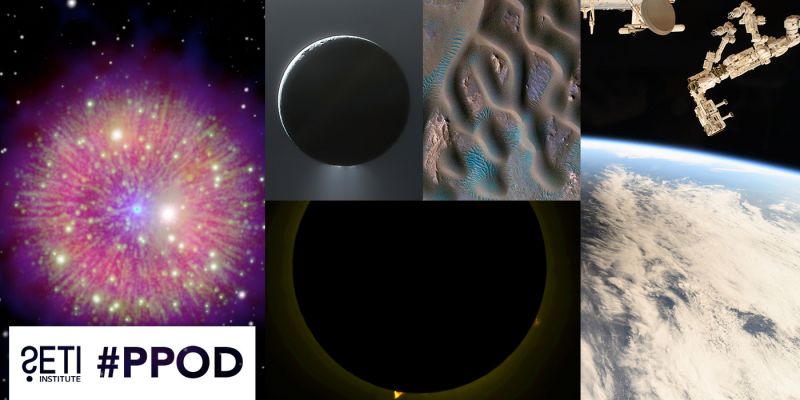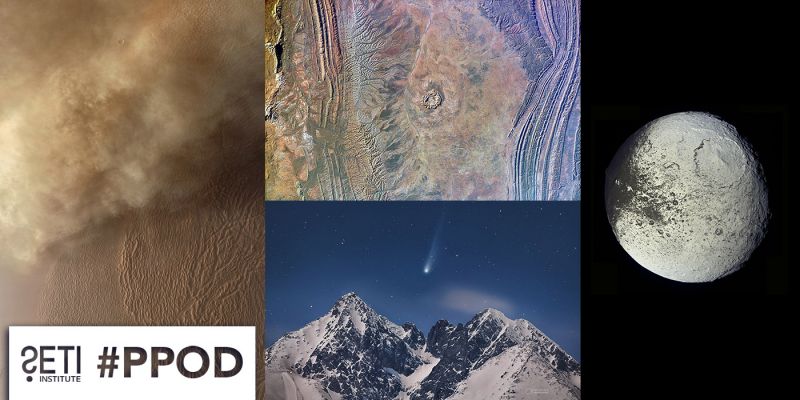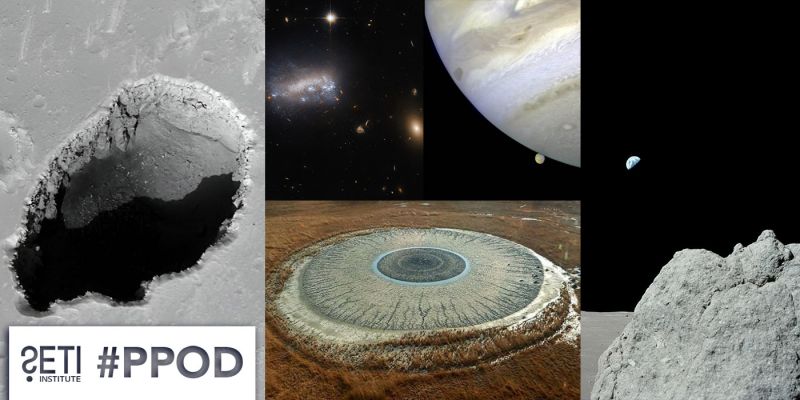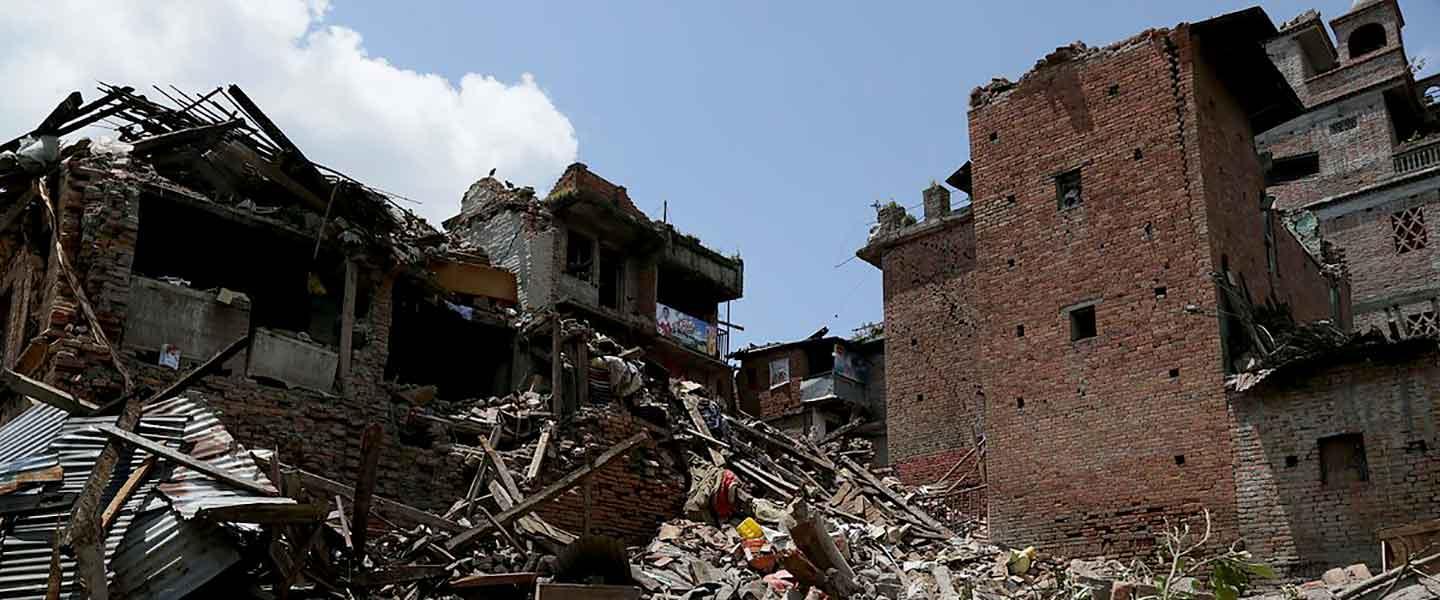
Friedemann Freund doesn't shrink from taking on the really big problems. His research has elucidated such important phenomena as the fact that rocks under stress behave like batteries that can produce currents deep within the crust of the Earth. These are not piddling currents, either - they can be hundreds of thousand amperes, maybe as large as several million of amperes, sufficient to be measured above ground, and perhaps even from orbit. Understanding this phenomenon and exploiting it could lead to a breakthrough in earthquake forecasting.
Friedemann, how did the science of earthquake forecasting attract your attention?
I became interested in earthquake research only about 15 years ago. I came to it from basic mineral physics - I wanted to understand defects in minerals that affect the physical properties of rocks when put under stress. Of course, our tectonically dynamic planet puts rocks under enormous stresses all the time. They wax and wane. Eventually, they cause rocks to rupture, generating shock waves that can bring down buildings or generate tsunamis which can run across entire oceans or even around the world. It is mind boggling to realize a magnitude 9 earthquake releases the mechanical energy equivalent to the total energy released during the explosion of over 2,000,000 Hiroshima-class atomic bombs.
The conventional seismological community is unable to derive early warnings for even the largest magnitude earthquakes, such as the 2011 magnitude 9 quake that devastated parts of Japan or the 2004 Indian Ocean earthquake off the west coast of Sumatra. My work centers on the subtle, but undeniable non-seismic signals generated when stresses are building up deep in the Earth to the level where rocks will eventually rupture.
How did your research into mineral defects lead you to the study of pre-earthquake signals?
I became interested in defects in crystals many years ago while in Germany. I chose magnesium oxide, the simplest of all oxide materials. My peers at the university were skeptical, saying there was nothing left to find out by studying MgO. However, they were dead wrong. My work led me to a defects, which everybody had overlooked for decades or misinterpreted as due to some unspecified “dirt” or contamination. One of the unusual features of these defects is that, when activated, they increase the electrical conductivity of MgO by up to 8 orders of magnitude – an enormous change. I started to characterize these amazing defects with every physical technique on the books and began to work with my son Mino, when he was a PhD student in physics at the ETH in Zürich, Switzerland. Together we developed a new analytical technique designed to learn more about those defects, which by then had been given their own name, “positive holes”. We used an underutilized fundamental physical properties of insulating materials, namely dielectric polarization at the limit of 0 Hz.
In the mid-1990s, turning my attention toward studying rocks, I soon found out that minerals in common rocks have the same type of defects as my old MgO crystals. One day it occurred to me that, by mechanically stressing rocks, I might be able to generate electricity.
This idea turned out to be correct but it took me another 10 years before I came up with a practical procedure that has since become a benchmark. Working with two post-docs at NASA Ames and NASA Goddard, I was able to demonstrate in 2006 that, when we apply moderate stress to one end of a block of granite about 2 feet in length, we could draw a substantial electric current from the other end. This current was due to positive holes flowing down the stress gradient.
As predicted in a theoretical paper I had published in the mid-1980s, I showed in 2009, together with a group of students, that air molecules become massively ionized at the rock surface, when we stressed rocks real hard. We observed tiny sparks flying off the corners and edges of the rocks because thousands of small corona discharges were firing up.
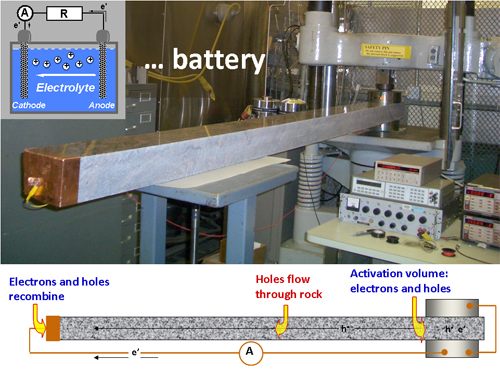
Photo credit: Gary Cyr
Are your findings currently being used in the field to detect unusual ionization levels in the atmosphere?
I've been working with Tom Bleier, who leads Quakefinder, the humanitarian R&D division of Stellar Solutions. Tom has installed over a hundred air conductivity sensors alongside sensor that detect ultralow frequency (ULF) waves along California's San Andreas Fault, along the coast of Peru, in Greece and Taiwan. Whenever there was a moderate or big earthquake not far from one of the Quakefinder stations, there was indeed a large increase in air conductivity. When we saw the effect for the first time, our sensor was overwhelmed by the amount of ionization. This air ionization at the ground level and the upward expansion of the heavily ion-laden air, probably up to the stratosphere, causes distinct changes in the ionosphere some 200-300 km above us. These are very complex processes, widely reported in the scientific literature as potential pre-earthquake indicators. I was fascinated to begin understanding how these processes work. I'm pleased to see that this work is slowly receiving coverage in the literature and the press.
How does the catastrophic March 2011 earthquake in Japan factor into your research?
I have not looked at this earthquake in any detail yet. It happened deep underneath the ocean, and the 1500 m deep water may have filtered out many of the signals that arise from electric currents some 30 km below the ocean floor.
What is the coolest thing about your project?
The sheer scope of the work is energizing! Earthquakes are only one of the many aspects that have come out of my work. Even though I plunged into this earthquake arena and some people now call me the earthquake guy, this work is actually only an entry into an even wider area of research.
How is your research expanding in scope?
In reading seemingly unrelated reports, I began to wonder if the positive hole charge carriers I had discovered some 25 years prior could be responsible for the bewildering variety of signals that have been reported to occur in the natural environment prior to major earthquakes, including effects on humans and animals. To me, the answer quickly became Yes!
In June 2011, in a session chaired by my son Mino at a brain mapping conference in San Francisco, California, I gave a talk, in which I pointed to the ionosphere. The ionosphere, which wraps around the globe at an altitude of 100-1000 km, carries a set of standing waves in the ULF end of the electromagnetic frequency spectrum known as Schumann Resonances.
The Schumann Resonances are constantly fed by lighting strikes in the lower atmosphere. The reason is that every lighting bolt that hits the Earth emits electromagnetic radiation from very high frequencies, which one can actually hear in the old radios as a crackling noise from distant lightening strikes, to very low frequencies. One component, around 8 Hz, is the frequency that an electromagnetic (EM) wave needs to travel around the entire Earth. It can thus form a standing wave. I became interested in the influence these extremely low frequency waves might have on living organisms.
It turns out that our brains also emit EM radiation at sharply defined frequencies around 8 Hz. Prior to an earthquake, however, the earth sends out bursts of low and extremely low frequencies that cover the entire spectrum from 0.001 Hz to 100 Hz. These EM waves come from the belly of the earth. There are very interesting studies that link psychological and physiological phenomena in humans and animals to the approach of large earthquakes.
What are some examples of psychological or physiological phenomena exhibited prior to an earthquake?
Evidence is mounting that ultra low frequency and extremely low frequency radiation emitted in the natural environment can have profound effects on human and animal health and behavior prior to an earthquake. An excellent paper has been written by Alexander Shitov, a professor at a regional university in Southern Siberia. He characterized a number of incidents that occurred prior to the 2003 magnitude 7.5 Chuya earthquake in the part of Southern Siberia, where he lives. One of the aspects Dr. Shitov looked at was medical records. He showed that about two weeks before this earthquake, there was an unusual increase in the number of people flocking to hospital emergency rooms seeking medical help. Interestingly, the medical records show that the reasons were related to neurological disorders - hypertension, vegetative vascular dystonia, epilepsy – pointing to something that the Earth produced prior to this large earthquake. Other conditions showing up only after the quake, such as acute respiratory infections and gastro enteric diseases, can be explained by the aftermath of such a natural disaster, dust in the air and polluted water.
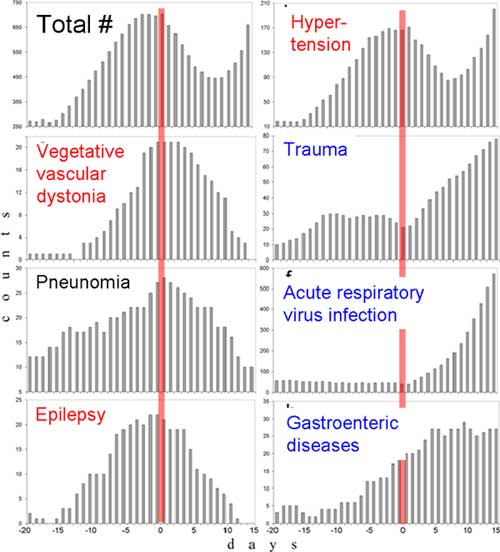
Emergency visits prior to the Magnitude 7.5 Chuya earthquake in Siberia. September 27, 2003.A. Shitov, 2010
Another example of interesting pre-earthquake behavior came about through pure chance. In the spring of 2008, a group of medical doctors at the University of Chengdu in Sichuan, China, were monitoring the circadian rhythm of laboratory mice. On May 12, 2008, in the midst of their experiment, the devastating magnitude 8.0 Wenchuan earthquake occurred less than 100 kilometers from the university. The researchers continued their experiment but then found out that three to four days before the earthquake, the circadian rhythm of the mice had become perturbed. The mice became inactive, as if they were hunkering down and wanted to hide. This behavior continued for a few days after the earthquake, until a normal behavioral pattern re-emerged. A friend of mine from China sent me the EM spectrum recorded at the same university. It shows a large ULF emissions two or three days before the Wenchuan earthquake - at the same time the laboratory mice exhibited their strikingly abnormal behavior.
In a third example Rachel Grant, then Ph.D. biology student at The Open University in England, was in Italy in March-April 2009 in her third year of studying the mating behavior of toads. At its peak the mating activity is known to be essentially uninterruptable. However, Rachel suddenly noted in early April that the toads disappeared from the lake, which was their mating grounds. For two days she could not locate any toads, even not in the wet grass downstream from the lake, Then the deadly 6.3 magnitude earthquake hit approximately 70 kilometers away and heavily damaged the town of L'Aquila. Three days later the toads returned.
Strange and interesting things are observed before major earthquakes. I find this area of study a wonderful challenge in which to understand the complexities of the world and how Life on this Earth is influenced by processes that originate in the sun and by processes that originate deep within our planet.
What do you currently consider your biggest challenge?
My biggest challenge is to convince the scientific community, which is mostly hunkered down in high specialized areas of study, that there are natural phenomena that require a broadly interdisciplinary or – as a friend of mine recently said – a transdisciplinary approach. Many in mainstream science have a tendency to dismiss observable phenomena, which they don’t understand, as questionable or worse.
The work I'm doing upsets some deeply engrained notions. There are geoscientists who just don’t want to spend time understanding why positive hole charge carriers, which I discovered while studying MgO single crystals, also occur in common rocks, with which they have worked during all their careers. They reject my work out of hand exactly because it provides new explanations for phenomena, which they had accepted as “established knowledge” for decades. This is my biggest challenge to overcome this defensive wall that mainstream scientists often tend to erect around themselves when confronted with something that threatens the comfort of their existing knowledge.
Why should the general public care about your research?
The general public is made to believe that seismologists are the only people who really study and understand earthquakes. No doubt, seismologists have done wonderful work over the past hundred years. They look at a huge number of earthquakes, they study past earthquakes in great detail, and then they construct elaborate statistical models that should predict when the next earthquake will happen. However, in this retrospective analysis earthquakes can never be "predict". All you get are wide uncertainty margins like the 30-year uncertainty that is reflected in most property insurance policies.
I don't want to look backwards at past earthquakes and use statistics to predict future earthquakes. This doesn’t work. I want to train my senses and my instruments on the Earth and try to understand what happens as large earthquakes “get ready” to strike. For this we need to look primarily at the stresses, which are building up deep below, 10, 20, 35 kilometers below the surface of the earth. The question to be posed is simple: Can we pick up and understand the signals, which are produced during the build-up of stresses below and detectable at the Earth surface? Since these signals are bewilderingly diverse, ranging from ionospheric perturbations to unusual animal behavior and everything in between, it is important to understand whether and how they are connected to each other on a physics level. If we can show that atmospheric phenomena and ionospheric perturbations and phenomena in the biologic world, such as animal behavior, are linked to fundamental processes taking place deep in the Earth crust when tectonic stresses build up, then – and only then – can we advance our knowledge to recognize the conditions under which major earthquakes get ready to strike.
The word “prediction” is often used to postulate that one must be able to say exactly, with narrow error margins, when and where an earthquake will occur and what its magnitude will be. However, it is preposterous to believe that this is possible. It is as impossible as to predict where exactly the next lightning strike will hit during a thunderstorm. However, on the basis of my work, I know that we’ll be able to reach a point in time – maybe only a few years into the future – where we’ll be able to issue public alerts stating, "Stresses at a particular fault seem to be building up deep in the earth's crust and there is an increased chance of an earthquake within the next few days." Reaching this point will have an impact. It will save lives and help minimize property damage. It will mark a complete turn-around from the present state of affairs, where nobody, in particular no mainstream seismologist, can forecast the approach of a seismically dangerous situation.
How did you come to join the SETI Institute?
When I came to NASA Ames in the mid-1980s, my interest was focused on the question of the origin of life and how we can understand the conditions on a lifeless Earth some 3 to 3.5 billion years ago. It takes very complex bioorganic chemistry for life to evolve, and I wanted to understand more. This area of interest brought me to the SETI Institute.
What keeps you motivated?
Motivation is an interesting incentive, and it certainly changes with age. Throughout my career I have always wanted to understand nature. I've been motivated by a desire to try to understand how things in nature work. I also took a pleasure in looking at seemingly simple questions that touch our lives, such as “how does chlorophyll work” or “how can cold-blooded animals live in cold water and be active, knowing their body temperature is almost the same as the water temperature”. My curiosity will never be quenched as long as there are questions for which we have yet to discover the full answers.
As a youth, were there any books or movies that influenced your career?
Strangely enough, Velikovsky's book, Worlds in Collision, published in 1950, fired up my imagination. Velikovsky was a colorful character. He had this idea that Venus was once a wandering planet-sized object that passed near Earth not long ago. He proposed a near-collision between Earth and Venus resulted in creating many of the floods and natural catastrophes reported in old writings from different cultures continents apart. He thought that, when Venus was captured by the sun and incorporated into the solar system, it became a planet. That was such a challenging idea to accept. Even if I didn't want to accept it, how would I be able to refute it? I was intrigued by the scientific process.
How has your lifelong study into the physics of Earth influenced your thoughts on the possibility of life on other planets?
Wherever in the universe there is a planet with land and liquid water and an active weathering system, I predict that this planet will slowly but inextricably become oxidized. Even without life and without photosynthesis this planet will acquire oxygen in its atmosphere. Carl Sagan's proposal of the "pale blue dot" being a symbol of life in the "blackness of space" is a beautiful metaphor. Life is not necessary to create a pale blue dot. However, I should hasten to say that the same weathering process, which injects oxygen into the near-surface environment, will also release organic molecules, specifically complex molecules such as suitable for self-organization and, hence, for the origin of life.
You've had an Adjunct Professor position at San Jose State University since 1989. What type of affiliation do you have with the University?
As an adjunct professor, I have the privilege to sit in on faculty meetings, if I want, though I don't have a voting voice. The position also allows me to work with students from the University's Physics Department and from other departments. I enjoy working with young people, and I've been able to work with some very good students.
If you had a one-year sabbatical to work on a pet project, what would it be?
I'd like to revisit some ideas I had about 30 years ago. At the time my work had led me to become interested in proton conductivity. I developed a complete semiconductor physics of protons carrying electric currents as they relate to certain chemical processes. I would like to see whether my basic understanding of proton conductivity can be applied to better understand to the functioning of the living cell. Our cells have an amazing capability of transporting protons through the cell membranes. Peter Mitchell who proposed an elaborate but basically "unphysical" mechanism for this transmembrane proton transport received a Nobel Prize. I challenge his idea. If I had six months or a year, or if someone would give me the money to hire a capable young Post-Doc, I'd love to see how far I can take my fundamental understanding of how protons conduct electricity and how they couple to the flow of electrons -- a fascinating project, if only I had the time to do it.


